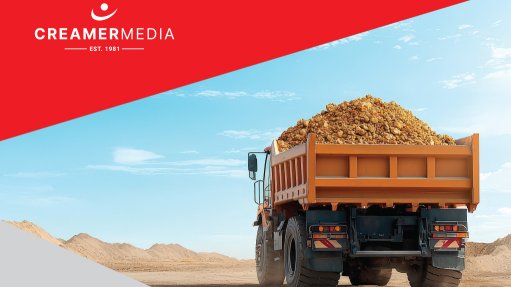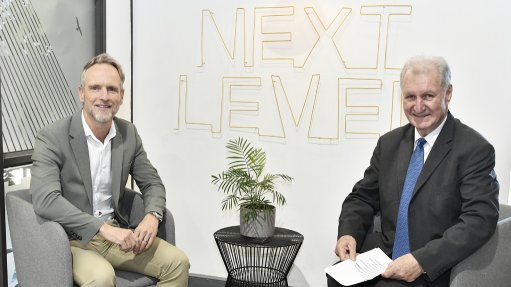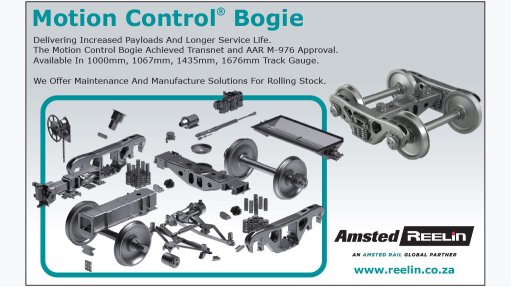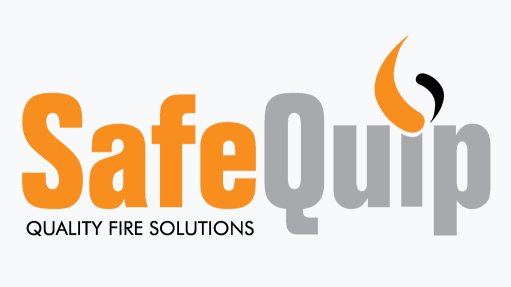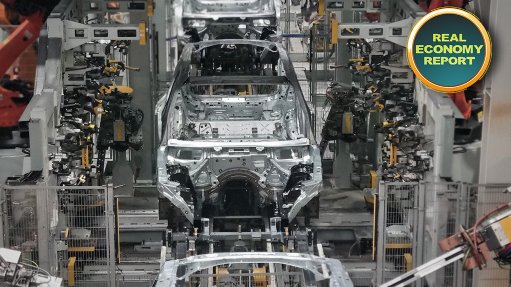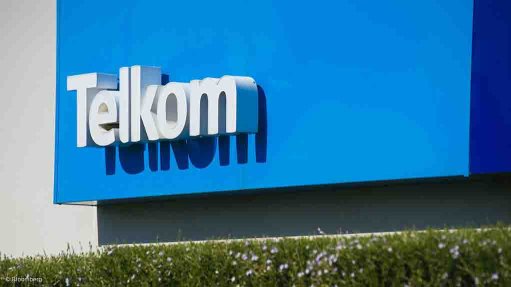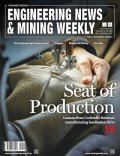The Retail Capital September SME Monthly Forecast
This article has been supplied.
Interest rate cut finally on the cards – but we are not out of the woods yet It’s time to start planning for Q4 – whatever your small business does – as well as consolidate what has happened in the previous three quarters of 2024.
This year has been one of massive change: from the almost ubiquitous adoption of AI improving efficiency and productivity across sectors, to the new Government of National Unity (GNU) coalition, South Africa has a sense of optimism about it which, encouragingly, international investors are noticing too.
A more stable policy environment, which has followed on from the elections, has a far-reaching impact on attracting long-term investments which will e.g. support the country’s broader economic aspirations as well as positively affect the infrastructure gap. This as policy certainty influences foreign direct investment (FDI) confidence, something South Africa needs to attract after years of a downward trend towards instability and inefficiency from aged and poor infrastructure, failing municipalities and ongoing load-shedding, to mention just a few key issues that have affected the country, and SMEs, at large.
Much like 1994, there is a sense of a ‘new dawn’ across the private and public sector which creates an opportune time for SMEs to leverage for their benefit - and the economy’s. They do after all contribute 34% to the nation’s GDP.
With this as context, here, Migual da Silva, Managing Executive of Retail Capital, a division of TymeBank, unpacks what SMEs need to know in September.
“South Africa is on the up and this is being felt across sectors and among SMEs and consumers. We’re emerging from a dark, long winter both figuratively and literally, where South Africans have had times of no water or energy and the price of everyday goods has drastically increased, hitting consumers and businesses hard in the pocket. Now, as the new season starts, good news abounds, offering a much-needed life buoy to businesses large and small. Indeed, Q4’s economic outlook is the best we’ve seen for some time, and looking towards the upcoming festive season, SMEs need to make hay while the sun shines,” comments da Silva.
Finally, interest rate cuts anticipated for SA and USA
There is no doubt that the expected cuts in interest rates both in SA (19 September) and in the US (18 September) will have a ricochet effect across the country and the world.
Across the pond, the US Federal Reserve will announce its interest rate decision a day before the South African Reserve Bank (SARB). In the USA, interest rates have held firm at 5.25% - 5.5% for 16 months. While immediate relief is unlikely – as the cost of everything became so expensive, leading to a lot more debt reliance – the Fed is moving in the right direction. And what the Fed does the rest of the world, including South Africa, tends to follow.
While the SARB has held firm on an 8.5% rate for months on end, there are plenty of whispers across the economic industry that a cut is finally due – and may even be bigger than expected. While interest rates locally have been increasing since 2021, by a total of 475 basis points, inflation is eventually looking good and is expected to return to the mid-point of the SARB’s 3% - 6% band of 4.5% in Q4.
What does this all mean to the small business owner? The cost of finance to keep their businesses afloat will come down. The price of rental or bought premises will drop, the upkeep of delivery vehicles and the fuel that is needed to run them will decrease, and the purchase of wholesale goods needed to make products will be more affordable as suppliers will adjust prices accordingly too.
SMEs are however urged to put this relief in costs to good use and not spend hastily; rather build a safety net to provide financial protection should another wave of challenges hit.
SMEs must build a financial buffer
Despite having strong, resilient attitudes, the truth is that many SMEs have very little in terms of back-up – and have been struggling to make ends meet for some time now. The impact of the pandemic was acutely felt and since then, factors such as loadshedding, water shortages and a consistently high petrol and diesel price have significantly tested their resilience.
Based on insights from a recent snap poll conducted among Retail Capital’s SMEs, the pain is being felt across small businesses, regardless of size or the amount of time in business.
According to the poll, 36% of respondents have not saved any money in the past year, while just under 27% have saved between 1% and 5% of their income. Less than 7.5% of respondents managed to save 20% or more of their income. Of key importance is the fact that only 46% of respondents have an emergency fund. And of those, only 22.5% have sufficient funds to cover three months or more of business expenses.
What then is an SME to do when they don’t have an emergency fund to fall back on when times are tough? Almost 20% of respondents indicated they are working from home to save on rental for instance. They are also doing as much as they can themselves (23.5%), rather than taking on staff or using external services, while those that have staff are cutting back on wage increases. Others report having to continually cut costs, while working seven days a week to keep their businesses afloat. Whatever it takes seems to be the norm and SME owners are captaining their ship 24/7, doing all they can to stay afloat financially.
How to manage the new “two-pot” legislation as an SME that offers a pension fund
September marks a significant change for those South Africans who have a pension fund, provident fund, retirement annuity, or a preservation fund, as well as the SMEs that offer this benefit, as the so-called “two-pot retirement” system came into effect on 1 September 2024. In essence, it splits an employees’ pension fund into two “pots” – a far smaller one that can be accessed and money withdrawn from it – and the other “pot” which is the remainder of the fund that cannot be accessed until retirement age.
The two-pot system was designed to give South Africans access to quick cash in the face of emergencies, but there is also a risk that it will be used for living costs and day-to-day needs. Either way, Government has signed it into law and SMEs need to take heed of their responsibility in managing the implementation of this new legal system.
Firstly, SMEs must make sure that they are compliant with the new legislation. To be compliant SMEs may need to update existing retirement fund structures or set up new systems that align with the regulatory requirements. It’s wise then for SMEs to work closely with financial advisors and legal experts to ensure compliance is 100% correct.
Payroll will be affected too so it’s key that business owners upskill themselves and/ or their payments teams to ensure that the correct tax is applied. This includes ensuring that the right amounts are allocated to each pot and that the relevant tax implications are managed appropriately. Key to note for all parties is that the tax that will be applied to “two-pot” withdrawals will be higher than the normal tax rate applicable to retirement fund withdrawals.
Educating employees about financial wellbeing and long-term financial security will be key and SMEs should engage their staff about the implications of withdrawing funds out of their first of the “two pot system”. South Africans are generally under extreme financial pressure and are finding it hard to get by, living month-to-month. While it may seem attractive to gain access to part of one’s retirement fund, it does have long term consequences. Not only does the overall fund decrease in size but the withdrawn amount is taxed at your marginal income tax rate. SMEs have a responsibility to educate staff on the implications – including the high tax rate that is applied – if they chose to withdraw from their savings pot of money.
Looking ahead:
September is indeed a time for change. SMEs have prevailed through some of the worst conditions over the past few years – and many have done so without having much of a financial safety net. While debt will likely be more affordable, for now, and the South African economy at large will be in a better position to reclaim its place as Africa’s economic jewel, SMEs need to remain cautious and build a buffer rather than increase overheads. We are not out of the woods yet.
Article Enquiry
Email Article
Save Article
Feedback
To advertise email advertising@creamermedia.co.za or click here
Comments
Press Office
Announcements
What's On
Subscribe to improve your user experience...
Option 1 (equivalent of R125 a month):
Receive a weekly copy of Creamer Media's Engineering News & Mining Weekly magazine
(print copy for those in South Africa and e-magazine for those outside of South Africa)
Receive daily email newsletters
Access to full search results
Access archive of magazine back copies
Access to Projects in Progress
Access to ONE Research Report of your choice in PDF format
Option 2 (equivalent of R375 a month):
All benefits from Option 1
PLUS
Access to Creamer Media's Research Channel Africa for ALL Research Reports, in PDF format, on various industrial and mining sectors
including Electricity; Water; Energy Transition; Hydrogen; Roads, Rail and Ports; Coal; Gold; Platinum; Battery Metals; etc.
Already a subscriber?
Forgotten your password?
Receive weekly copy of Creamer Media's Engineering News & Mining Weekly magazine (print copy for those in South Africa and e-magazine for those outside of South Africa)
➕
Recieve daily email newsletters
➕
Access to full search results
➕
Access archive of magazine back copies
➕
Access to Projects in Progress
➕
Access to ONE Research Report of your choice in PDF format
RESEARCH CHANNEL AFRICA
R4500 (equivalent of R375 a month)
SUBSCRIBEAll benefits from Option 1
➕
Access to Creamer Media's Research Channel Africa for ALL Research Reports on various industrial and mining sectors, in PDF format, including on:
Electricity
➕
Water
➕
Energy Transition
➕
Hydrogen
➕
Roads, Rail and Ports
➕
Coal
➕
Gold
➕
Platinum
➕
Battery Metals
➕
etc.
Receive all benefits from Option 1 or Option 2 delivered to numerous people at your company
➕
Multiple User names and Passwords for simultaneous log-ins
➕
Intranet integration access to all in your organisation





